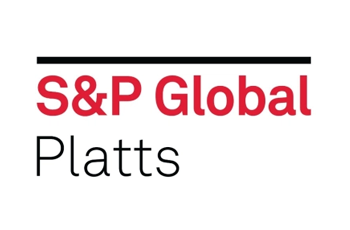Making Waves: Supplemental research and analysis to complement the April 2018 report on the impacts of IMO 2020
 In April 2018, S&P Global Platts published our “Making Waves” study outlining how tighter specs for marine fuels will substantially affect shipping, refining, prices, and trade. It also addressed some of the significant ripple effects expected in other industries and estimated that the total global impact will be in excess of $1 trillion over five years. That study, according to extensive feedback from our clients, has become the benchmark for analysis on this issue by the industry. But that study is not intended to be just a standalone report. Instead, it is the beginning of a process of analysis and update that will continue to 2020 and likely beyond. As part of that expanding body of work, we will be issuing periodic supplemental research updates on what is happening, any changes to the outlook, and additional in-depth analysis on specific sub-topics that complement the research in the original report.
In April 2018, S&P Global Platts published our “Making Waves” study outlining how tighter specs for marine fuels will substantially affect shipping, refining, prices, and trade. It also addressed some of the significant ripple effects expected in other industries and estimated that the total global impact will be in excess of $1 trillion over five years. That study, according to extensive feedback from our clients, has become the benchmark for analysis on this issue by the industry. But that study is not intended to be just a standalone report. Instead, it is the beginning of a process of analysis and update that will continue to 2020 and likely beyond. As part of that expanding body of work, we will be issuing periodic supplemental research updates on what is happening, any changes to the outlook, and additional in-depth analysis on specific sub-topics that complement the research in the original report.
Markets Absorb New Gas with Few Hiccups
Spot on-peak energy prices were up year-over-year in July in most eastern markets and ERCOT due to higher weather driven loads and stronger gas prices in the Appalachia basin and the Northeast. July’s average weather-adjusted load across the Eastern Interconnect and ERCOT increased by 0.18% year-over-year. Warmer than normal weather led to a raw load increase of 1% year-over-year to mark a two-year high of 449 aGW. A tight US gas supply and demand balance for the remainder of the summer continues to place downside risk to storage stockpiles in the Southeast and Texas entering the winter withdrawal season. With more than 3.0 Bcf/d of demand growth forecast in the Southeast and Texas next summer and insufficient capacity into that region from the Northeast and Permian, Henry Hub could be short gas, providing upside risk to 2019 prices. The recent large DART spreads in ERCOT power prices point to continued risks due to unplanned outages and wind generation variability in high load periods.
Gas Gains Momentum in Power Vis-à-Vis Coal, But Still Hasn’t Left Oil in the Dust
In this day and age, one generally thinks that any new demand will come from China and all other plans will step aside for their wave of new gas needs. Interestingly enough, they don’t dominate the list of new gas-fired power plants expected to come online in the coming years. Either in a state of planned or under construction, there are at least 25-GW of new plant coming online within the next 5-years – with 11.5-times that in planned construction in the 2023+ time frame across the globe. This is painting a picture of gas becoming a far more important fuel to global power stacks.
Chinese economic data raise red flags
With trade tensions rising, the Chinese government has decided to make its economic policy stance accommodative. But a policy shift takes time to filter through; credit data showed that borrowing conditions were tight in July (from the government’s earlier policy of deleveraging), and they were actually restrictive for economic growth. In the U.S., July data for consumer spending and manufacturing output were constructive. Pressures that have recently weighed on emerging market economies will likely remain in place.
China’s Key Product Exports Ease in 2H18 as Refiners Trim Runs Growth
Asia-Pacific net crude imports are expected to increase by ~1 MMB/D to ~24 MMB/D in 2018 and the Middle East will continue to be the dominant source of supply despite an expected cutback of Iranian imports by some countries. Although China has not yet imposed tariffs on U.S. crude imports, buyers have cut back, but the U.S. only accounted for ~4% of total imports in 1H18. Reductions in China’s imports of mixed aromatics have negatively affected gasoline markets, but light cycle oil has a lesser impact on the diesel markets. Chinese refiners are expected to limit runs growth in 2H18, with gross exports of key products dropping from 1.06 MMB/D in 1H18 to 0.92 MMB/D in 2H18. Overall, Asian refining fundamentals should continue to be moderately supportive, with healthy Singapore cracking margins at above $6/Bbl on average for both 2018 and 2019.
Propane Prices Slide Lower
Front-month non-LST propane lost 2% week-on-week and closed at 94.75 cents/gal. However, the propane price maintained 60% of the crude price through the week. Ethane prices continue to strengthen ending the week 3.2% higher at 39.75 cents/gal. US propane/propylene stocks built by 3.4 million barrels during the week ended August 10, bringing total stocks to 69.8 million barrels, according to EIA data. The weekly build is the largest since mid-June and brings inventories roughly half a million barrels above year-ago levels. The EIA reported propane exports of 981,000 b/d compared with Platts Analytics’ estimate of just over 1 million b/d based on ship tracking data. For the week ending August 17, Platts Analytics forecasts LPG exports will be 1 million b/d, with heavy VLGC activity observed at US Gulf Coast ports.
A Closer Look at Iranian Export Assumptions
We forecast Iranian crude and condensate exports to fall by 1.4 MMB/D between April and November. But sanctions uncertainty creates upside and downside risks to the outlook. Compliance from Japan, South Korea, and Europe would alone cause a ~900 MB/D reduction; more compliance expected elsewhere. cFlow data shows reductions of 560 MB/D between April and July. Also watch for uncertainty in Libya and Venezuela.
US Gas Weekly Report
The prompt September NYMEX contract tested and failed to breach $2.89 to 2.90/MMBtu twice this week, as a new range is starting to take shape, i.e. support around $2.90/MMBtu and resistance in the upper $2.90’s. The most recent CFTC’s weekly COT report reflecting positions as of August 7 showed that increase in NYMEX prices have been driven by non-commercial short covering. Notably, shorts covered ~38.6 thousand lots week-over-week (Aug 7 vs. Jul 31), with outright long positions actually contracting ~1.5 thousand lots over this period.
US Sanctions: A Threat to Turkish demand growth with Southern Gas Corridor implications
The recent round of sanctions and the rapid fall in the value of the Turkish Lira raise questions about the projected growth of Turkish gas demand. Dollar-denominated gas imports were expected to rise, with Azerbaijani gas taking a growing place through the development of the TANAP project and new LNG regas facilities still to come into operation this year. The current situation represents a clear threat to the affordability of imported gas and to the growth of gas demand in general. This is set against the risk of destabilizing key shareholders in the Southern Gas Corridor pipeline projects.”
Short-term correlation between temperatures and demand is lower than expected this summer, and largely absent for wind and solar output
The heatwave observed across Europe between the end of July and beginning of August offered an opportunity to observe the sensitivity of the four major continental markets to high temperatures. Italy appeared to be the most sensitive one, with average demand increasing by 0.8 GW/°C. This level reduces to 0.4 GW/°C in Spain and 0.2 GW/°C in France, and almost vanishes for Germany. The dependence of demand on temperature was lower than the Entso-E view would indicate, but the impact on wind and solar output was even less evident. The correlation between solar output and temperatures, clearly visible at seasonal scale – generally associated to their cross correlation with day length – tends to fade over days/weeks, and short-term temperature forecasts are not a reliable predictor of solar output. As for wind, any correlation is further degraded. Extreme temperatures are associated to particularly low wind output, but moderate-to-high ones came with very broad wind dispatch levels, making a linear fit quite a stretch even for Germany.
Coal Pricing Remains Hot, But Not as Hot as Chinese Temperatures
Coal pricing moved higher last week, with CIF ARA proving to be the biggest gainer week-over-week. The demand side continues to dominate market fundamentals, with sweltering temperatures in China pushing power demand above already extremely strong prior-year levels. Despite all of the weather-related strength in demand, the market seems is more comfortably supplied than last year, with Chinese stockpiles at key power plants increasing during the month of July despite record demand.
Production Still Strong but Higher Capex Required due to Cost Inflation
U.S. shale crude and condensate production grew by 9% in 2Q18, a substantial gain driven by rapid production growth in the Permian. Production averaged 5,985 MB/D for the quarter, with the Permian accounting for 2,580 MB/D. Although sequential growth will slow somewhat as Permian growth stalls due to takeaway capacity constraints, total production is still forecasted to average 6,030 MB/D for the year — 1,330 MB/D greater than 2017.
 Financial Stresses Still Low, but Cross Currents Remain
Financial Stresses Still Low, but Cross Currents Remain
Cross currents continued to be evident this past week. The S&P 500 gained 0.6%, with a move lower in volatility. Some of the debt metrics stabilized their performance, particularly emerging market and high yield debt. Energy, however, weakened, with industrial metals and precious metals also pulling the entire commodity space lower. Disinflation appears to be increasing. The dollar eased 0.25% on the week, but showed strength against the South African rand, up 5.5% on weak precious metals. The St Louis financial stress indicator showed lower stress on the week, with levels remaining low.
Sharp build in U.S. total commercial stocks driven by extremely high crude imports, despite record refinery runs
Total hydrocarbon inventories in the U.S. increased by a massive 17.45 MMB last week, driven by a large and surprising built in crude (+6.80 MMB), and in “other products” (+6.72 MMB). Distillates also had a significant increase (+3.57 MMB), but this had been anticipated. The crude stock build was the result of a very large “balancing item” (+630 MB/D) and unexpectedly high crude imports (+9.01 MMB/D). While it’s difficult to forecast the balancing item variable, we expect it to remain in positive territory in the next few weeks. Yet, we do anticipate crude imports to revert back to mean this week. Crude stocks at Cushing increased by 1.6 MMB, rising to 23.4 MMB. This is the first increase that has taken place there since mid-May. Meanwhile, inventories in PADD 2 increased by 1.7 MMB, indicating the rest of PADD 2 also built during the week. Additionally, lower refinery runs in PADD 4 over the past couple weeks are likely to have already begun pushing additional barrels into Cushing, which is expected to continue for several more weeks. Over the next couple weeks, refinery maintenance in PADD 2 is expected to result in local demand weakening further. Therefore, we forecast inventories at Cushing to build by 1.0 MMB this week.
Global Equities Ease, with Regional Divergence
Global equities eased 1.3% on the week, but regional performance shows increasing divergence. Europe eased 2.3%, while Asia fell 2.9%, but the U.S. S&P 500 gained 0.6%. In the U.S., defensive sectors such as consumer staples and utilities strongly outperformed and gained 2.8-3.3% for the week. Energy was a big laggard and fell 3.4%. Internationally, all the tracking indices lost ground with China, Emerging Asia, emerging markets, and Latin America being the weakest.
Private Operators Set New Market Share Record While Wells per Rig Plummets
Private operators, who traditionally held less than 40% of all U.S. active oil and gas rigs, hit a new record of 50% in June of this year. However, the number of wells drilled per rig plummeted to unprecedented low levels. The increase in market share by private operators is the result of higher and stable oil prices resulting in more investments from private equity companies while publicly traded companies have focused more on capital discipline. The reduction in wells drilled per rig is a natural evolution as the percentage of horizontal wells keeps increasing for all private and public operators. On the positive side, horizontal wells with longer laterals generally result in more productive wells. But with private operators’ shale portfolios likely less robust than those of public companies, falling rig productivity may also translate into slower production growth.
Will 2018 become a Record Year for M&A Activity in U.S. Shale?
With this week’s announcement that Diamondback is acquiring Energen’s assets in the Permian for $9.2B, U.S. shale transactions have surpassed $42B so far this year and if the trend continues, 2018 is likely to become a record year in M&A activity. The largest transactions since 2014 have taken place this year including BP’s acquisition of BHP’s shale assets ($10.5B) and Concho buying RSP Permian ($9.5B). This is a departure from the promise by most operators to focus on returns to shareholders by exercising capital discipline and staying away from more acquisitions. History will tell how economic the acquisitions were and if they will be able to realize of all the expected synergies. However, we do not expect the acquisitions to materially change our growth forecast that calls for U.S. shale oil production to average 6 MMB/D in 2018 (+ 1.3 MMB/D year-over-year) and 6.9 MMB/D in 2019 (+0.9 MMB/D year-over-year).
2020 High Sulfur Fuel Oil Surplus – Where Will it Go?
The International Maritime Organization’s (IMO) 0.5% cap on sulfur in shipping fuel comes into effect January 1, 2020. Platts Analytics’ study, Making Waves, shows some 3 MMB/D of high sulfur fuel will need to be replaced with low sulfur fuel. However, conversion capacity constraints suggest a surplus of 600 MB/D HSFO will still need to find a home, of which 100 MB/D is expected to enter storage.
Complimentary Webinar, August 22, 1 pm EDT — Register for: The Texas Nexus: Demand Beyond the Border - ERCOT and the Bending of the Supply Stack. Part of S&P Global Platts Analytics Summer Webinar Series – 2018.
The information above is part of S&P Global Platts Analytics weekly Energy Market Recap – which alerts readers to our current analysis of energy markets around the world as well as the key economic and political factors driving those markets. To read S&P Global Platts Market Recap first, subscribe here.
Click here for additional information on S&P Global Platts Analytics global energy commodity market research services.


